| Langrock: English Defence A40
1.d4 e6 2.c4 b6 3.a3 Bb7 4.Nc3 f5 |
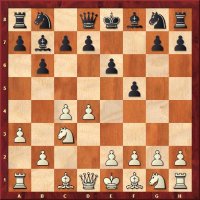 |
|
The plan with 1…e6 und 2…b6 is becoming more and more
popular, meaning that the repertoire for White presented
by Langrock (Part 1) is most welcome. According to the
author, there should be a slight advantage for White. |
Marin: Czech Benoni A56
1.d4 Nf6 2.c4
c5 3.d5 e5 4.Nc3 d6 5.e4 Be7 6.Nf3 0-0 7.Be2
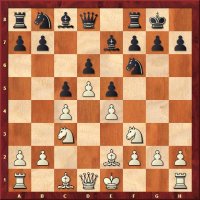 |
|
According to Marin, White can count on a slight but
stable advantage with the Classical System. The author’s
own experiences with the black pieces also demonstrate
that it can become really unpleasant for Black. |
Stohl: Benko Gambit A57
1.d4
Nf6
2.c4 c5 3.d5 b5 4.Nd2
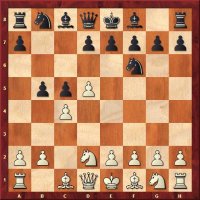 |
|
With his knight move, White is hoping to bring about a
quiet position, one in which strategy and manoeuvring
play an important rôle. Igor Stohl introduces us to the
nuances behind this setup.
|
Moskalenko: Dutch Stonewall A90
1.d4 e6 2.c4 f5
3.Nf3 Nf6 4.g3 d5 5.Bg2 c6 6.0-0 Bd6
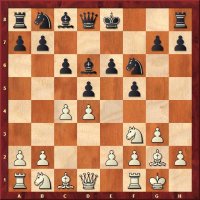 |
|
The author presents a database which contains 18 of his
own games and another 30 of them as game fragments in
the notes. This article really allows us to learn
something from a specialist in his own field.
|
Hazai/Lukacs: Caro-Kann B14
1.e4 c6 2.d4 d5
3.exd5 cxd5 4.c4 Nf6 5.Nc3 e6 6.c5
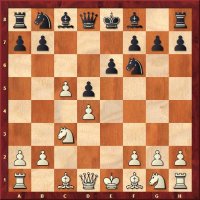 |
|
The Panov Attack with an early c5 soon gets the player
of the Caro-Kann out of the sort of positions he is used
to. But the price is a high one: Black attacks the pawn
chain and White really has to take care.
|
Rogozenko: Sicilian B45
1.e4 c5 2.Nf3
e6 3.d4 cxd4 4.Nxd4 Nf6 5.Nc3 Nc6
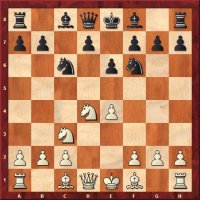 |
|
The sequence of moves chosen by Black is used by many
players as a way into the Sveshnikov System, allowing
certain variations to be avoided, e.g.
2.Nf3
Nc6
3.Bb5.
Rogozenko’s subject is
6.Nxc6!,
a move which allows White to cut across Black’s plans.
|
Ftacnik: Sicilian Najdorf B99
1.e4 c5 2.Nf3
d6 3.d4 cxd4 4.Nxd4 Nf6 5.Nc3 a6 6.Bg5 e6 7.f4 Be7 8.Qf3 Qc7
9.0-0-0 Nbd7
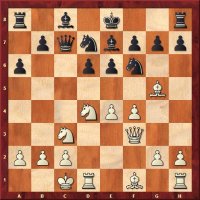 |
|
The position in the diagram is one which is very
frequently reached and which is extremely important for
the whole Najdorf System with
6.Bg5.
Ftacnik analyses moves apart from 10.g4, above all the
modern
10.Bd3.
At the moment Black has a few problems with it.
|
Marin: Ruy Lopez C66
1.e4 e5 2.Nf3
Nc6 3.Bb5 Nf6 4.d3 Bc5
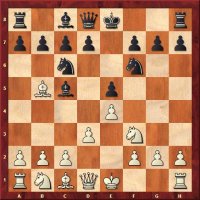 |
|
4.d3 allows White to avoid the Berlin Defence and the
ending after 4.0-0
Nxe4 5.d4
Nd6 6.Bxc6
dxc6 7.dxe5
Nf5 8.Qxd8+
¢xd8.
Marin shows that after
4.d3
Bc5
Black obtains comfortable play in all variations. |
Grivas: Tarrasch Defence D34
1.d4 d5 2.c4 e6
3.Nc3 c5 4.cxd5 exd5 5.Nf3 Nc6 6.g3 Nf6 7.Bg2 Be7 8.0-0 0-0
9.Bg5
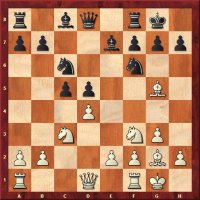 |
|
In the second part of Grivas’ repertoire for White
against the Tarrasch Defence, the sub-variations (i.e.
not 9…cxd4) are examined, above all 9…c4 and 9…Be6.
Here too White achieves a slight advantage. |
Krasenkow: Grünfeld Defence D85
1.d4 Nf6 2.c4
g6 3.Nc3 d5 4.cxd5 Nxd5 5.e4 Nxc3 6.bxc3 Bg7 7.Nf3 c5 8.Rb1 0-0
9.Be2 Nc6 10.d5 Ne5 11.Nxe5 Bxe5
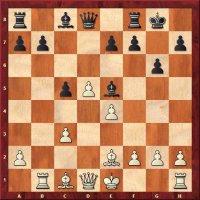 |
|
The author examines the variation
12.Qd2
b6
and calls it Ftacnik’s antidote to 8.Rb1.
In all lines, Black achieves satisfactory play and
Krasenkow prophesies a comeback at the top level for
this variation.
|
Horvath: King's Indian E70
1.d4 Nf6 2.c4
g6 3.Nc3 Bg7 4.e4 d6 5.Bd3
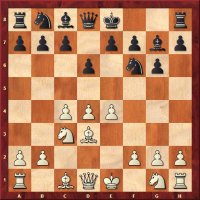 |
|
This setup demonstrates a relationship to the Sämisch
System, except for the fact that the white-squared
bishop is not walled in on f1. The disadvantage is the
weakness of the d4-square. In Part 1, Horvath looks into
variations with an early …e5. |
Postny: Kinig's Indian E97
1.d4 Nf6 2.c4
g6 3.Nc3 Bg7 4.e4 d6 5.Nf3 0-0 6.Be2 e5 7.0-0 Nc6 8.d5 Ne7 9.b4
Nh5 10.Re1 f5 11.Ng5 Nf6 12.f3
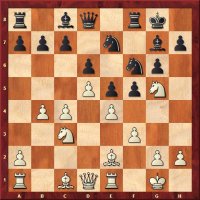 |
|
The bayonet attack with 9.b4 was at present in danger of
becoming a refutation of the King’s Indian, at least
amongst the top players. Evgeny Postny has examined the
most important variations and in his opinion it is now
more White who will have to come up with some
improvements. |